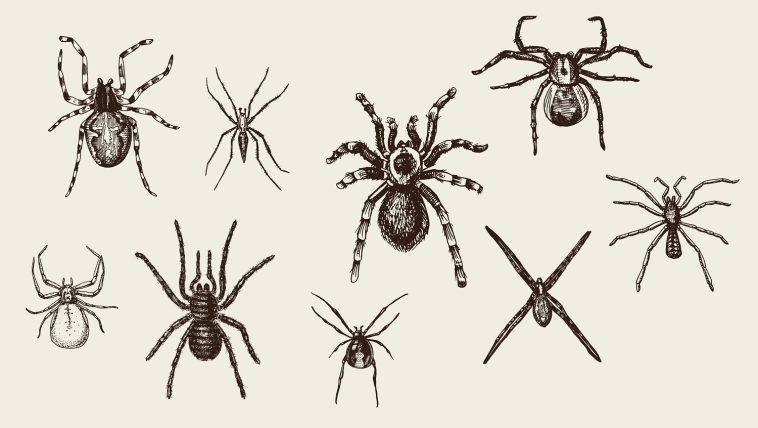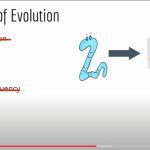[Originally published in 2015 as Evolution Bug]
Nothing is simple in biology.
Monica Young and Paul Hebert of the Biodiversity Institute of Ontario, Canada, have found within the amino acid sequences of eight-legged critters, known as arachnids, an evolution bug.
In one of the largest invertebrate amino acid sequence studies to date, published in the highly respected journal PLoS ONE, August 2015, Young and Hebert found highly variable patterns of amino acid sequences in the hemeprotein known as cytochrome C between species.
None of Charles Darwin’s continuous “successive, slight” evolutionary changes in more than 4,000 species of arachnids studied were found. The paper demonstrates the persistent bug in the theory of evolution — no common ancestor.
Cytochrome C
Cytochrome C functions as a component of the electron transport chain in mitochondria. As an essential component of cellular metabolism, this protein is ubiquitously distributed from microbes to man, making cytochrome C one of the most popular molecules studied by evolutionary scientists.
This enzymatic protein is uniquely composed of about 100 amino acids throughout the animal kingdom with 19 amino acids occurring in exactly the same sequence. Differences in the identity and positions of the remaining amino acids have been the center of interest in tracing Darwin’s continuous “successive, slight” evolutionary changes.
Chickens and turkeys have identical amino acid sequences, as do pigs, cows, and sheep. Both humans and chimpanzees share the identical molecule with rhesus monkeys sharing all but one of the amino acids with us. These similarities have been suggestive of common ancestry. The amino acid sequences of cytochrome C are now known in over 400,000 animal species.
Arachnids
Using previously published cytochrome C amino acid sequence data, Young and Hebert selected the arachnid class to probe for yet unknown patterns of evolution.
The term arachnid is derived from the Greek word aráchnē, meaning “spider.” Arachnids comprise over 100,000 named species, including spiders, scorpions, harvestmen, ticks, mites, and solifuges.
From these 100,000 arachnid species, Young and Hebert examined the aminoacid sequences in 4,177 arachnid species, including a broad range of representatives from all 16 orders and 43% of its families — no small task. At the end of their research, Young and Hebert could only report that:
Patterns of amino acid substitution in COI [cytochrome oxidase-1] are generally congruent with previously reported variation in nucleotide substitution rates in arachnids.
Molecular Bug in the Theory
What Young and Hebert discovered was congruent and compatible with cytochrome C discoveries by their research forerunners. “As more protein sequences began to accumulate” during the late twentieth century, Australian molecular biologist Michael Denton discovered, “direct evidence for evolution is emphatically absent.”
In analyzing the evolutionary dilemma of cytochrome C, Italian geneticist Giuseppe Sermonti had to “conclude that the data were compared with the hypothesis (we call the null hypothesis) that the cytochromes of all classes derived synchronously from one and the same molecular progenitor and that there was no order of precedence among them.”
Oxford University molecular biologist John Archibald in his new book One Plus One Equals One (2014) concurs with Denton and Sermonti:
The human cytochrome C protein is 105 amino acids long, and 97 of these are the same in the elephant – the human and elephant cytochrome c proteins are 92 percent identical.
The tenet of gradual evolutionary divergence in amino acid sequences stemming from a common ancestor is, at best, material for a Discovery science fiction documentary. As Michael Denton found that there “is not a trace at a molecular level of the traditional evolutionary series…. man is as close to a lamprey as are fish!”
Importantly, as Young and Hebert were forced to report, not only are the transitional links “emphatically absent,” so is the absence of a common ancestor — the holy grail of evolution.
“The cytochrome C from all species—man, fly, spinach,” according to Sermonti, “was functionally identical and the mutations that were thought to have accounted for the molecular differences were termed ‘neutral’ [of no effect]. Spinach cytochrome C did its job just as well as human cytochrome C.”
“The more one approaches the molecular level,” UCLA molecular biologist Richard E. Dickerson notes, “the more similar they appear, and the less important the differences between, for instance, a clam, and a horse become.”
Molecular biology has been a long-standing evolution bug. In struggling for the survival of the theory, even Dickerson was forced to address the dilemma:
“It is hard to see a common line of descent snaking in so unsystematic a way through so many different phyla.”
Young and Hebert’s failure to differentiate species at the molecular level is not a new finding. Decades earlier, French evolution biologist François Jacob had concluded: “Biochemical changes do not seem to be the main driving force in the diversity of living organisms.” Not good news for evolutionary biologists investigating molecular biology for the purpose of unlocking the mysterious patterns of evolution.
“The cytochrome C phylogeny disagrees with the traditional [evolutionary] one in several instances,” evolutionary biologist Francisco J. Ayala at UCI reluctantly concedes, “including the following: the chicken appears to be related more closely to the penguin than to ducks and pigeons; the turtle, a reptile, appears to be related more closely to birds than to the rattlesnake, and man and monkeys diverge from the mammals before the marsupial kangaroo separates from the placental mammals.”
The devastating evolution bug uncovered in Young and Hebert’s tree is the complete absence of any ancestral transitional links and, more importantly, no hint of the existence of any known common ancestor for the entire arachnid class — the cornerstone of evolutionary biology.
Lee Spetner, a physicist at John Hopkins University, in the book Evolution Revolution, Why Thinking People Are Rethinking the Theory of Evolution (2014) recaps the widely recognized evolution bug in the theory:
An argument for Common Descent would be helped if anatomical data and molecular data would always lead to the same tree. However, the fact is they don’t.
Evolution 101, the indoctrination product of UC Berkeley and intellectual purveyor of evolutionary dogma, never mentions the cytochrome C evolution bug, for good reasons. Evidence for evolution in cytochrome C is “emphatically absent.”
Darwin’s dilemma intensifies.
Genesis
Scientific investigations, even at the cytochrome C molecular level, continue to underscore a highly complex pattern of nature — evidence that is compatible with the Genesis account of creation.
Nothing is simple in biology.







